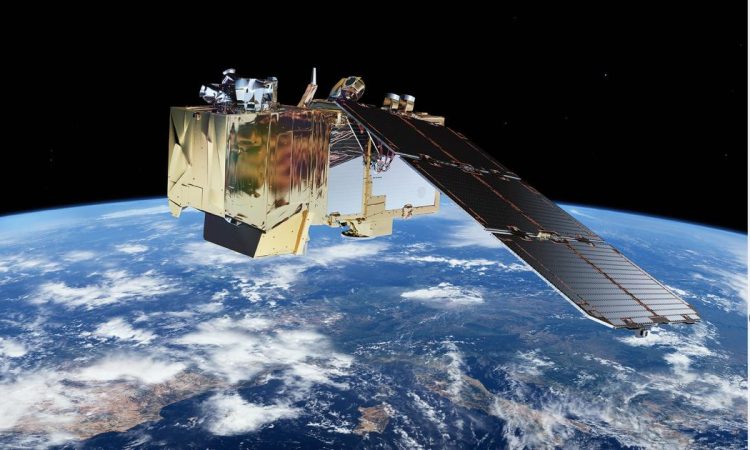
Since Thursday we have been with Sentinel-2C a new European satellite in Earth orbit. As part of the Copernicus program Together with other Sentinel satellites, it provides the EU Commission with enormous amounts of data. They are particularly crucial for the fight against climate change.
Why this is so can be seen, for example, from: glaciers. Several satellites with different optical and radar instruments regularly measure the ice surfaces. “You don’t just want to know how far the glacier is retreating, but also how much volume it is losing,” explains Robert Meisnercommunications coordinator of ESA’s Earth and Environmental Observation Organization, told futurezone.
To do this you need to know how thick a glacier is underlying rock surface is. “If you collect this over the years, you get a good impression of what’s happening to the glaciers there,” says Meisner.
➤ Read more:
The results of these and many other measurements have been shared centrally with the since 2018 provided. The platform is operated by the EU Commission promotes and combines climate data from the Sentinel instruments as well as other satellite data Model calculations and years of research work. The result is a huge treasure trove of comparable measurements that can be used to draw a fact-based picture of the Earth’s past, present and future.
Glacier volume and sea level rise
that the ice caps in Greenland have lost approximately 5,476 gigatons of ice between 1972 and 2022. As a direct result, sea levels rose by 15.2 mm. While the glaciers lost around 50 Gt of mass annually in the 1980s, in 2022 it was 198 Gt.
One advantage of the Copernicus program is that this data is available for every person free of charge be provided – that means you don’t have to rely on ready-made evaluations, but you can convince yourself of these facts.
The sea level is collected, among other things, with one of the newer satellites, Sentinel-6. there was a significant acceleration in the increase. Between 1993 and 2003, sea level rose by 2.1 mm annually, and from 2013 to 2023 4,3 mm. Overall, this means a global increase of 10,3 cm over the past 30 years.
➤ Read more:
“It’s not just that Melt the ice caps play a role, but also the warming of the oceans. The water is expanding and the sea level is rising,” says Meisner. In addition, the increase is not the same everywhere in the world, as the Gravity plays a role. However, all of these factors can be taken into account using satellite data.
3 Pictures
View slideshow
Long-term data storage
The Copernicus program collects and stores this information over a long period of time. This ensures that comparable, high-quality data will continue to be available for climate models in the future. “Glaciers and ocean surfaces do not change overnight. You expect climate, but you get weather. “That’s why you have to collect the data over a long time,” says Meisner, describing the importance of such a database.
➤ Read more:
In order to be able to classify current measurements, there are always Comparative values important from the past. This is the only way to do it serious forecasts for the future, which could also have an influence on politics.
Sharp increase in the surface temperature of the Mediterranean
A good example of this is the measurement of Surface temperature on land and on water. A particularly drastic picture emerges here, especially in the Mediterranean. In July 2024, a daily average of 28,9 Grad measured – that means a large part of these temperatures are above this, in some places they climbed over 30 degrees. In some regions, anomalies have been measured where the temperature 5 Grad was above normal.
“This has a direct impact on plants and animals, with invasive species migrating from the tropical Atlantic. But it also affects the weather. With more warmth and moisture in the atmosphere, more precipitation is to be expected, which will also be distributed differently than we know,” explains Meisner.
➤ Read more:
3 Pictures
View slideshow

